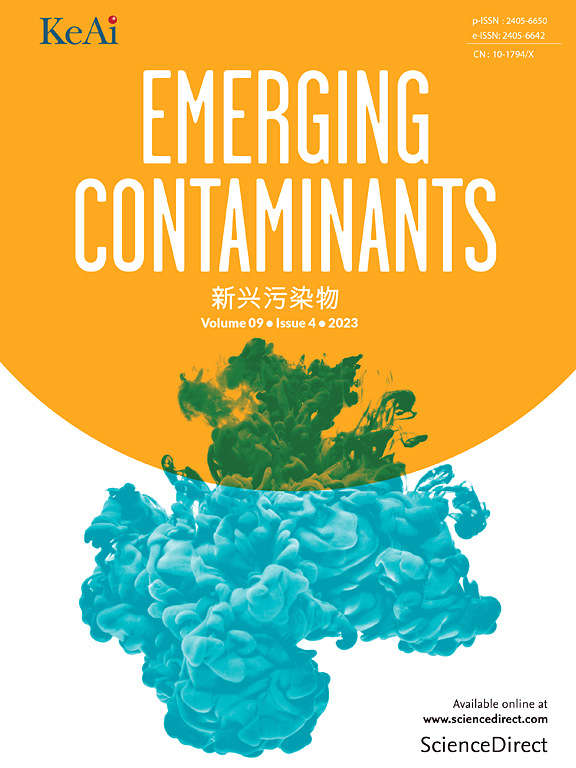长江地表水抗生素的发生、空间分布、来源解析及风险评价
IF 6.9
2区 环境科学与生态学
Q1 ENVIRONMENTAL SCIENCES
引用次数: 0
摘要
河流中抗生素污染物的识别与溯源已成为研究热点。本研究收集了中国长江流域67个地点的地表水样本。分析水样中各种抗生素的检出率、浓度及分布特征。根据这些数据,追踪了这些抗生素的来源,并与采样区域内的城市人口规模、工业活动和废水处理效率等因素进行了关联。长江流域共检出57种抗生素,罗红霉素、1,7-二甲基黄嘌呤(1,7- dtx)、氟苯尼考(FF)的检出率均超过80%。上游地区抗生素平均总浓度(525.4 ng/L)显著高于中游地区(89.5 ng/L)和下游地区(246.6 ng/L)。此外,抗生素浓度与人口密度和经济发展呈正相关(R = 0.857, p <;0.05)。基于生态风险评价和优先级指标,依诺沙星、罗红霉素、沙拉沙星和克拉霉素(CLR)为中等风险。本研究为河流生态系统中抗生素污染物的定期监测和调控提供了科学指导。本文章由计算机程序翻译,如有差异,请以英文原文为准。

Occurrence, spatial distribution, source apportionment, and risk assessment of antibiotics in Yangtze river surface water
The identification and source tracing of antibiotic contaminants in rivers has become a research hotspot. In this study, surface water samples were collected from 67 locations in the Yangtze River Basin, China. The detection rate, concentration, and distribution characteristics of various antibiotics in these water samples were analyzed. Based on these data, the sources of these antibiotics were traced and correlated with factors such as urban population size, industrial activity, and wastewater treatment efficiency within the sampling area. A total of 57 antibiotics were detected in the Yangtze River, with detection rates of roxithromycin, 1,7-dimethylxanthine (1,7-DTX), and florfenicol (FF) exceeding 80 %. The average total concentration of antibiotics was significantly higher in upstream regions (525.4 ng/L) compared with middle regions (89.5 ng/L) and downstream regions (246.6 ng/L). Furthermore, antibiotic concentrations positively correlated with population density and economic development (R = 0.857, p < 0.05). Based on ecological risk assessment and priority indexes, enoxacin, roxithromycin, sarafloxacin, and clarithromycin (CLR) posed medium risks. This research provides scientific guidance for the periodic monitoring and regulation of antibiotic contaminants in river ecosystems.
求助全文
通过发布文献求助,成功后即可免费获取论文全文。
去求助
来源期刊

Emerging Contaminants
Medicine-Public Health, Environmental and Occupational Health
CiteScore
10.00
自引率
6.70%
发文量
35
审稿时长
44 days
期刊介绍:
Emerging Contaminants is an outlet for world-leading research addressing problems associated with environmental contamination caused by emerging contaminants and their solutions. Emerging contaminants are defined as chemicals that are not currently (or have been only recently) regulated and about which there exist concerns regarding their impact on human or ecological health. Examples of emerging contaminants include disinfection by-products, pharmaceutical and personal care products, persistent organic chemicals, and mercury etc. as well as their degradation products. We encourage papers addressing science that facilitates greater understanding of the nature, extent, and impacts of the presence of emerging contaminants in the environment; technology that exploits original principles to reduce and control their environmental presence; as well as the development, implementation and efficacy of national and international policies to protect human health and the environment from emerging contaminants.
 求助内容:
求助内容: 应助结果提醒方式:
应助结果提醒方式:


